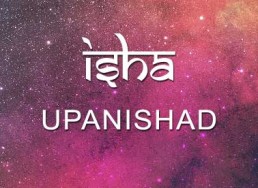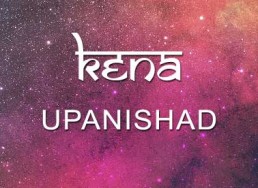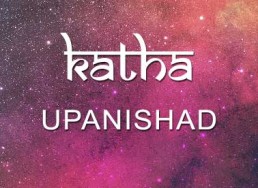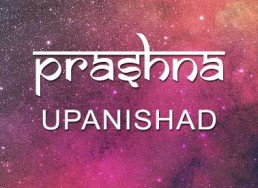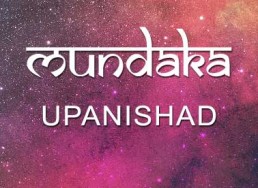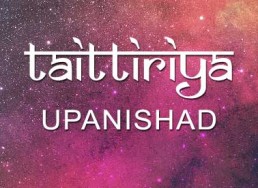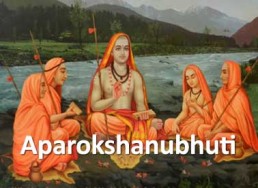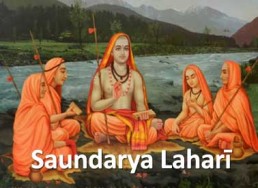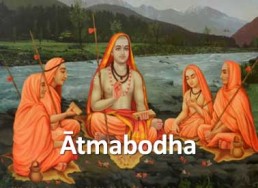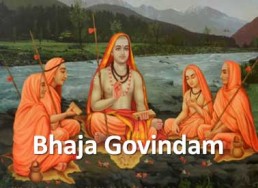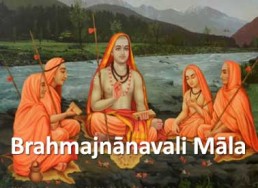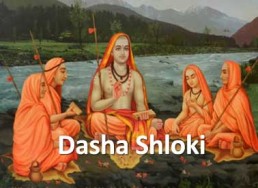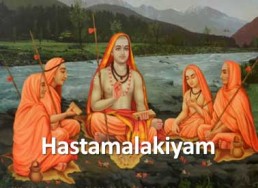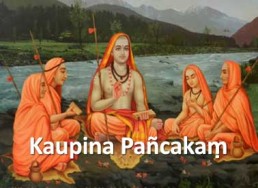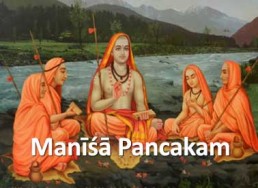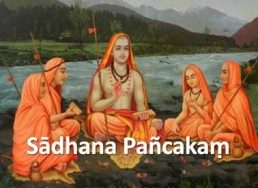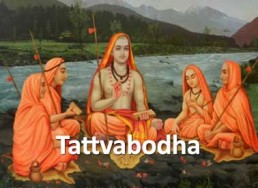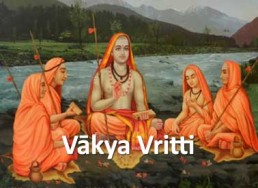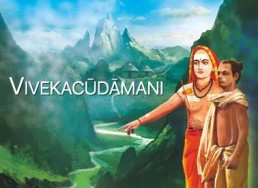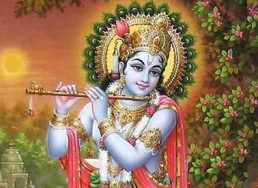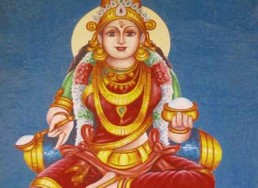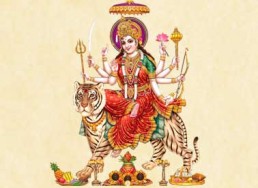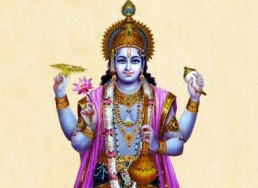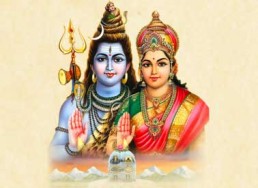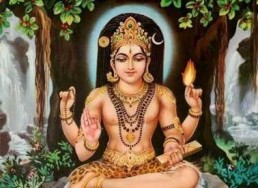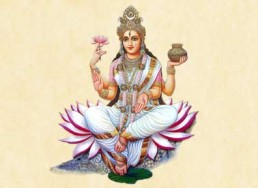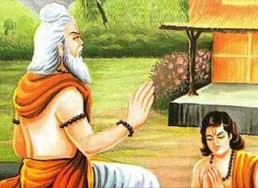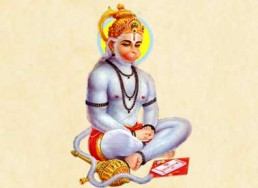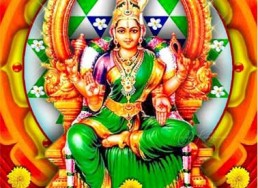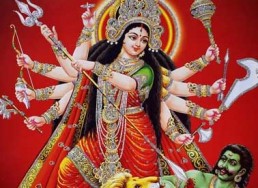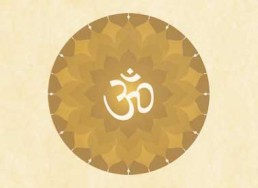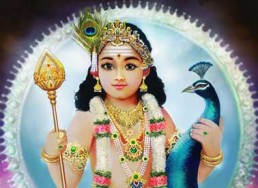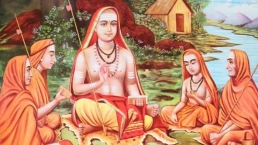
Born: 788 AD, Kalady in Kerala, India
Maternal home: Veliyanad, Kerala, India
Samadhi: 32 years, Kedarnath, India
Guru: Govinda Bhagavatpada
Parents: Aryamba, Sivaguru
About Adi Sankaracharya
Complete Works
Philosophical Works
Commentaries (Bhashyas)
Devotional Compositions
Alphabetic List of Works
Adi Shankaracharya
आदि शङ्कराचार्य was an 8th-century Indian philosopher and theologian who consolidated the doctrine of Advaita Vedanta. He is credited with unifying and establishing the main currents of thought in Hinduism. In the space of the thirty-two years that he was given in the form of a mortal body, he plumbed the depths of the great legacy of Hindu philosophy, systematised and developed the Advaita doctrine into an imperishable school of thought, revived and reformed Hinduism, toured the length and breadth of India, from Kaladi in Kerala to Kedarnath in the Himalayas, and set up the four mathas to ensure Hinduism’s preservation and propagation. Hinduism has not seen a thinker of his calibre, or witnessed, before or since, the indefatigable energy he displayed in pursuing the goals he set out to achieve.
The great seers who wrote the Upanishads could scarcely have thought that centuries after their remarkable insights, there would appear an individual who would give their ideas such widespread traction and appeal. In his perennially peripatetic, eventful, yet much too short a life, Shankara became a shining beacon in the evolution of Hinduism and the thought structure that has underpinned it. In this sense, he was a legatee of a larger legacy, that commenced millennia before, of profound intellectual spirituality, contemplation, debate, enquiry, discussion and ideas about the cosmos and our place in it. His seminal philosophical contribution can only be fully understood if we are aware, however briefly, of this legacy and and its amazing relevance to what science is telling us about the cosmos and our world today.
His works in Sanskrit discuss the unity of the Ātman and Nirguna Brahman “brahman without attributes”. He wrote copious commentaries on the Vedic canon (Brahma Sutras, Principal Upanishads and Bhagavad Gita) in support of his thesis. His works elaborate on ideas found in the Upanishads. He also composed numerous devotional hymns, which are rich in poetry and piety, serving to highlight the helplessness of the devotee and the glory of the deity.
A brief profile of Sankaracharya
Sankara’s life and teachings portray a perfect man, highly competent and supremely efficient. To sum up, a brief profile of the Master may be drawn thus:
- Sankara, the Yogesvara was the most distinguished in all systems of Yoga.
- Foremost in the field of Jnana Yoga, the Perfect Jnani.
- Foremost in the field of Karma Yoga, the ideal of all Karma Yogis.
- Foremost in the field of Bhakti Yoga, the noblest of Bhaktas worthy of emulation.
- Unsurpassed in the field of Hatha Yoga.
- Master in both the knowledge and practice of the Tantrik system.
- Foremost among Teachers, a “mobile university”, sympathetic yet relentless, the world teacher, Jagadguru.
- A Perfect Organiser who established great institutions in the four quarters of the country which remain, even today, the beacons of spirituality.
- A far-sighted stateman who integrated the country as a cultural unit and laid firm foundation for it. Even today, India is bound as one nation not by one political ideology, or one common economic policy or any other secular programme of material welfare, but by its one cultural foundation which has sprung up from, is sustained by, its spiritual heritage. This great heritage was in turn consolidated in its best and purest form by Sankara.
- An exemplary Man of Letters, his style has the mathematical precision of a scientists, vividity of expression of a poet laureate and unity of vision of a spiritual Master, coupled with simplicity and straight-forwardness of presentation.
- Above all, a down-to-earth man whose heart throbbed with compassion and sympathy for all men and beings irrespective of whether they were rich or poor, learned or illiterate, brahmana or chandala.
Birth and childhood
Adi Shankara was born in Kalady, a village in Kerala, India, to a Namboothiri brahmin couple, Shivaguru and Aryamba and lived for thirty-two years. Adi Shankara’s parents were childless for many years. They prayed at the Vadakkunnathan temple (also known as Vrishachala) in Thrissur, Kerala, for the birth of a child. Legend has it that Shiva appeared to both husband and wife in their dreams, and offered them a choice: a mediocre son who would live a long life, or an extraordinary son who would not live long. Both the parents chose the latter; thus a son was born to them. He was named Shankara (Sanskrit, “bestower of happiness”), in honour of Shiva (one of whose epithets is Shankara).
His father died while Shankara was very young. Shankara’s upanayanaṃ, the initiation into student-life, was performed at the age of five. As a child, Shankara showed remarkable scholarship, mastering the four Vedas by the age of eight. Following the customs of those days, Shankara studied and lived at the home of his teacher. It was customary for students and men of learning to receive Bhikṣā (“alms”) from the laity; on one occasion, while accepting Bhikṣā, Shankara came upon a woman who had only a single dried amalaka fruit to eat. Rather than consuming this last bit of food herself, the pious lady gave away the fruit to Shankara as Bhikṣā. Moved by her piety, Shankara composed the Kanakadhārā Stotram on the spot. Legend has it that on completion of the stotra, golden amalaka fruits were showered upon the woman by Lakṣmi, the Goddess of wealth.
Sannyasa
From a young age, Shankara was attracted to sannyasa (“monastic life”). His mother was against his becoming a monk, and refused him formal permission. However, once when Shankara was bathing in the Purna River near his house, a crocodile gripped his leg and began to drag him into the water. Only his mother was nearby, and it proved impossible for her to rescue him. Shankara asked his mother to give him permission to renounce the world then and there, so that he could be a sannyāsin at the moment of death. This mode of entering the renunciatory stage is called Āpat Sannyāsa. At the end of her wits, his mother agreed. Shankara immediately recited the mantras that made a renunciate of him. Miraculously, the crocodile released him and swam away. Shankara emerged unscathed from the water.
With the permission of his mother, Shankara left Kerala and travelled towards North India in search of a Guru. On the banks of the Narmada River, he met Govinda Bhagavatpada, the disciple of Gaudapada. When Govinda Bhagavatpada asked Shankara’s identity, he replied with an extempore verse that brought out the Advaita Vedanta philosophy. Govinda Bhagavatapada was impressed and took Shankara as his disciple. Adi Shankara was commissioned by his Guru to write a commentary on the Brahma Sutras and propagate Advaita Vedanta. The Madhavīya Shankaravijaya states that Adi Shankara calmed a flood from the Reva River by placing his kamaṇḍalu (“water pot”) in the path of the raging water, thus saving his Guru, Govinda Bhagavatpada, who was engaged in Samādhi (“meditation”) in a cave nearby.
On his mission to spread the Advaita Vedanta philosophy, Adi Shankara travelled to Kashi, where a young man named Sanandana from Choladesha in South India, became his first disciple. In Kashi, Adi Shankara was on his way to the Vishwanath Temple, when he came upon an untouchable with four dogs. When asked to move aside by Shankara’s disciples, the untouchable replied: “Do you wish that I move my ever lasting Ātman (“the Self”), or this body made of food?” Understanding that the untouchable was none other than god Shiva, and his dogs the four Vedas, Shankara prostrated himself before him, composing five shlokas known as Manisha Panchakam.
On reaching Badari in the Himalayas, he wrote the famous Bhashyas (“commentaries”) and Prakarana granthas (“philosophical treatises”). Afterwards he taught these commentaries to his disciples. Some, like Sanandana, were quick to grasp the essence; the other disciples thus became jealous of Sanandana. In order to convince the others of Sanandana’s inherent superiority, Adi Shankara summoned Sanandana from one bank of the Ganga River, while he was on the opposite bank. Sanandana crossed the river by walking on the lotuses that were brought out wherever he placed his foot. Adi Shankara was greatly impressed by his disciple and gave him the name Padmapāda (“lotus-footed one”). The sage, Vedavyāsa, visited Adi Shankara in the guise of an old brāhmaṇa. Adi Shankara debated with the brāhmaṇa for over eight days when at last, Vyasa revealed his real identity and blessed Adi Shankara.
Historical and Cultural Impact
At the time of Adi Shankara’s life, Hinduism had begun to decline because of the influence of Buddhism and Jainism. Hinduism had become divided into innumerable sects, each quarrelling with the others. The followers of Mimamsa and Sankhya philosophy were atheists, insomuch that they did not believe in God as a unified being. Besides these atheists, there were numerous theistic sects. There were also those who rejected the Vedas, like the Charvakas.
Adi Shankara held discourses and debates with the leading scholars of all these sects and schools of philosophy to controvert their doctrines. He unified the theistic sects into a common framework of Shanmata system. In his works, Adi Shankara stressed the importance of the Vedas, and his efforts helped Hinduism regain strength and popularity. Many trace the present worldwide domination of Vedanta to his works. He travelled on foot to various parts of India to restore the study of the Vedas.
Even though he lived for only thirty-two years, his impact on India and on Hinduism was striking. He reintroduced a purer form of Vedic thought. His teachings and tradition form the basis of Smartism and have influenced Sant Mat lineages. He is the main figure in the tradition of Advaita Vedanta. He was the founder of the Daśanāmi Sampradāya of Hindu monasticism and Ṣaṇmata of Smarta tradition. He introduced the Pañcāyatana form of worship.
Adi Shankara, along with Madhava and Ramanuja, was instrumental in the revival of Hinduism. These three teachers formed the doctrines that are followed by their respective sects even today. They have been the most important figures in the recent history of Hindu philosophy. In their writings and debates, they provided polemics against the non-Vedantic schools of Sankhya, Vaisheshika etc. Thus they paved the way for Vedanta to be the dominant and most widely followed tradition among the schools of Hindu philosophy. The Vedanta school stresses most on the Upanishads (which are themselves called Vedanta, End or culmination of the Vedas), unlike the other schools that gave importance to texts authored by their founders. The Vedanta schools have the belief that the Vedas, which include the Upanishads, are unauthored, forming a continuous tradition of wisdom transmitted orally. Thus the concept of apaurusheyatva (“being unauthored”) came to be the guiding force behind the Vedanta schools. However, along with stressing the importance of Vedic tradition, Adi Shankara gave equal importance to the personal experience of the student. Logic, grammar, Mimamsa and allied subjects form main areas of study in all the Vedanta schools.
Philosophy of Adi Shankaracharya
Advaita (“non-dualism”) essentially refers to the identity of the Self (Atman) and the Whole (Brahman). The key source texts for all schools of Vedānta are the Prasthanatrayi– the canonical texts consisting of the Upanishads, the Bhagavad Gita and the Brahma Sutras. Adi Shankara was the first in its tradition to consolidate the siddhānta (“doctrine”) of Advaita Vedanta.
The philosophy of Sankara is sublime and unique, highly inspiring and elevating. It commands the admiration of the whole world. Sankara made the edifice of Hindi religion strong and sturdy by his scientific exposition of the Upanisadik philosophy, so that even today Sanatana Dharma can face the challenges of modern science. Indian philosophy has always come to be identified with Sankara’s Advaita Vedanta.
The quintessence of Sankara’s philosophy was stated by himself in half-a-verse:
Brahma satyam jagan-mithya
Jivo brahmaiva naparah
Brahman, the Absolute, alone is real; this world is unreal (maya); and the jiva or the individual soul is not different from Brahman.
The Upanisadik terms ‘Brahman‘ and ‘Atman‘ indicate the highest Reality, which is non-dual. Supreme Brahman is nirguna, nirakara, nirvisesa, that is, without the gunas or attributes, formless, without any special characteristics, immutable, eternal, and akarta (non-agent). Brahman is above all needs and desires; It is always the witnessing subject; It can never become the obiect as it is beyond the reach of the senses. It is non-dual. One without a second. In Brahman there is not the distinction of substance and attributes. Brahman, the Absolute, is Existence (sat), Consciousness (cit) and Bliss (änanda); These form the svarupa of Brahman.
The only way of realizing Brahman is through jnana, and in order to attain this jnana and the supreme realization of the Absolute, a four-fold path is prescribed:
1. Viveka – right discrimination;
2. Vairagya – detachment from the sensory attractions, leading to the extinction of desires;
3. Sat Sampatti i.e.,
Sama i.e., Calmness;
Dama i.e., Self-control;
Uparati i.e., Detachment;
Titiksa i.e., Endurance;
Samadhi i.e., Creative Concentration;
Sraddha i.e., faith; and above all
4. Mumuksutva i.e., the sustained urge to attain liberation and the resolute will to shed human limitations and realise the Absolute in life.
Bhakti or devotion is only a step to secure the grace of God, which would obliterate the distinction between the aspirant and God; and so is Karma, actions without attachment, which bring purity of mind and which leads to the higher state of jnana.
Brahman is not an obiect as it is adrsya, beyond the reach of the eyes. Its nature cannot be defined in terms of any category; hence the Upanisads declare: ‘neti, neti’ not this, not this. This does not mean that Brahman is a negative concept or a non-entity or a contentless void. It is all – full, infinite, changeless, self-existence, self-delight, self- knowledge, and self-bliss. It is the essence of the knower. It is the Seer (drsta), Transcedental Truth (turiya), Silent Witness (Saksi).
Saguna Brahman and Nirguna Brahman are not separate or two Brahmans. The same Nirguna Brahman appears as Saguna Brahman for the worship of the devotees; it is the same Truth from two different points of view. Nirguna Brahman is the highest Brahman from the transcendental viewpoint (paramarthika); the Saguna Brahman is from the relative viewpoint (vyavaharika).
The Supreme Truth is that Brahman which is nondual and relationless. To Sankara this world is only relatively real (vyavaharika satta). He advocated vivarta-vada, the theory of phenomenal appearance or super-imposition (adhyasa). Just as snake is super-imposed on the rope in the twilight, this world and body are super-imposed on Brahman or Atman or the Supreme Self. If we had knowledge of the rope, the illusion of the snake in the rope will automatically vanish. Similarly, if we realize Brahman or the Imperishable, the illusion of the body and the world will disappear. When avidya or the veil of ignorance is destroyed through knowledge of the Eternal, when mithya-iñana or false knowledge is removed by real knowledge of the Imperishable, we shine in our true, pristine, divine, splendour and glory.
The Atman is that which gives the capacity to the sense-organs to perceive, the mind to feel, and the intellect to think. Atman is referred to in the Sastras as the Perceiver, Feeler and Thinker in the physical, mental and intellectual planes, respectively.
Historical Biography of Adi Shankaracharya
There does not appear to be any comprehensive historical biography of Sankara, and the material available about him is a mixture of facts, tradition and legends. Some details on the life and teachings of Sankara Bhagavadpāda have come down to us through Sankara Vijayams, of which some are:
- The Brhad Sankara Vijaya of Citusukhācārya who is said to be the direct disciple of Sankara himself.
- The Prācīna Sankara Vijaya of Anandagiri who is believed to have been known also as Toțakācārya of Jyotir Mutha at Badrikāśrama.
- The Acāryacarita, also known as Keraliya Sankara Vijaya of Govindanatha of Kerala.
- The Sankarabhyudaya of Raja Cuḍamani Dīkṣita.
- The Guru Vijaya, also called the Acārya Vijaya, of Ananta Ananda Giri.
- The Acarya Dig Vijaya of Vallisahāyakavi.
- The Sankara Dig Vijaya Sāra of Sadananda.
- The Sankara Vijaya Vilasa of Cidvilasa.
- The Srimad Sankara Dig Vijayam of Madhava (Śrī Svāmi Vidyāranya of Sringeri Mutt, 14th Century A.D.) It is also said to be known as Sankṣepa Sankara Vijayam.
Disciples of Adi Shankaracharya
Apart from a vast literature comprising commentaries, fundamental textbooks, devotional hymns, etc., Sankara left behind a legacy of great institutions of perfect discipline and organisation. But, however great the ideas of the Master be, if they were not grasped and brought into practice, they would have been of no use to posterity. In this, the Master was ably assisted by his innumerable disciples, who were all great, especially the four most distinguished of them, namely Padmapada, Sureśvara, Hastāmalaka and Toțaka. One might even concede that they were all as great as the Master himself.
In the Sankara Dig Vijayam of Vidyāraṇya, there are many references to the four disciples in glowing terms and analogies. The poet wonders whether they were the four puruṣārthas in human form, or the four Vedas, or the four muktis (salokya, samipya, sarūpya and sayujya) or the four faces of Brahma, the Creator. It is interesting to note that the characteristics of these groups of four have corresponding resemblances in the mental and intellectual makeup of the four disciples. The number four has a special significance in Vedanta and, as Svāmī Jñanananda Bharati would like to put it, it has a special significance to the four disciples and their internal make up. For example, when we carefully analyse the antaḥkaraṇa, the inner equipment, it is seen to consist of four strata: the citta, mana, buddhi, ahamkāra. Citta is the passive receptacle of all saṁskārās (vāsanās). Manas is the mind which is restless and easily swayed by inner samskārās, and by the objects of the external world. Buddhi is the intellect which decides and determines all activities. Ahamkāra is the principle which permeates all actions and experiences as the ‘I,’ including the state of deep sleep. It may be stated generally that ahamkāra is assertive, buddhi is decisive, manas is restless and citta is passive.
Padmapada may well be compared to ahamkāra. Sureśvara would not yield until he was convinced, and he may be compared to buddhi. The silent Hastamalaka may well be compared to citta and Totaka to manas, the restless mind, ever engaged in all kinds of service to the Master.
Jnanananda Bhārati goes further to draw parallels from the various ślokās of the Bhagavad-Gitā. And about the famous line, which occurs twice in the Gitā (IX-34 and XVIII-65): Manmanā bhava mad-bhakto, Madyaji mam namaskuru. ‘There are four paths indicated with one goal to reach that is Me’ he says: The first path, manmanā bhava (with mind ever concentrated upon Me) fits in with the ever inward turned Hastamalaka. The second process, mad-bhakta (devoted to Me) can be aptly said of Padmapada, the ever-devoted and constantly watchful disciple who had the privilege to save the life of the Master twice. Sureśvara fits in with the third process, madyāji (with all your spiritual endeavours aimed at me), hence, though the confirmed ritualist that he was, after his change over to new path shown by the Master, he transferred his allegiance from Karma to the Self, i.e., directed his spiritual endeavours from Karma to the Self. Toțaka, who did all kinds of service to the Master, fits in with the fourth process, mām-namaskuru (ever bowing down and prostrating to Me). The ‘Me,’ the Self, the objective of all these four paths, may be taken as Sankara himself.
Again in the following statement in Gita (XI-55), we find a parallel in the characters and make-up of the four disciples:
Mat-karma krt mat-paramo, mad-bhaktaḥ sanga-varjitaḥ,
nirvairaḥ sarva-bhūteṣu, yaḥ sa māmeti pāṇḍava.
Mat-karma-kṛt (he who does actions for Me) easily applies to Totaka; Mat-paramah (who looks upon Me as the Supreme) applies to Sureśvara who was converted to the conviction that the Self was the Supreme and not karma; Mad-bhaktaḥ (devoted to Me) can be said of Padmapāda, and Sanga-varjitaḥ (free from attachment) aptly fits with the make-up of Hastāmalaka. The last quality enumerated in the above Gītā verse, such as, Nirvairaḥ sarva bhuteșu (who bears enmity towards none) refers to all the disciples; it was one common trait they all had, qualifying them for the great task their Master had given them.
Once again, another statement from the Gita (IV-34) bears close resemblance to their internal makeup:
Tad viddhi pranipatena, pari-praśnena sevaya
Know It by surrender, questioning and service.
In this, ‘know’ can denote Hastamalaka, who was ever aware of the Self that he was, even before he came in contact with Sankara; ‘surrender’ can denote Padmapada, the devoted; ‘questioning’ Sureśvara, who held a great disputation with the Master; and ‘service’ obviously Totaka. ‘It’ is the goal of all the four, which can denote Sankara himself.
Again, it is said in the Gītā (VII-16), that ‘four types of people seek Me, the suffering, the inquisitive, the seeker of wealth and the wise.’ One might be tempted to equate Padmapada with the first category, the suffering, since he first approached the Master at Kast with a request to save him from ‘drowning in the ocean of samsara.’ Sureśvara fits in with the ‘inquisitive’ type; Totaka with the ‘seeker of wealth,’ the wealth here being spiritual wealth; and Hastamalaka with the ‘wise.’ All four had sought refuge in the Master, Sankara.
Thus, we have in these four great disciples of Sankara an exemplification of the various levels and various paths, a rare phenomenon in the spiritual history of the country, nay, of the whole world.
The Four Maths (Mathas) or Char Dham
During his travels across the length and breadth of India, he established four maths or peethams (ashrams) to unify the scattered and diverse groups of Sannyasis. Four maths were established, about 700 AD, in four different corners of India. He selected four of his senior-most disciples to head each of these maths. Each of these maths was assigned the task of maintaining and preserving for posterity, one of the four Vedas (the main scriptures of Hinduism) and a Maha Vakya. Shankaracharya reorganised all the Sannyasis in India into ten main groups (the Dasanami Sannyasa Tradition) allocated to different maths.
Historical and literary evidence also exist which prove that the Kanchi Kamakoti Mutt at Kancheepuram, in Tamil Nadu, was also founded by Shankaracharya.

Sri Sankara Jayanthi
There have been many enlightened teachers in the world besides Veda Vyasa who compiled all the Vedas and wrote the Brahma-sütras, and Sri Sankara who made the knowledge available to the common people. Only some of them are remembered and not others. Why do we worship only Veda Vyasa and Sri Sankara and not the others?
A person is remembered with respect in history because of a significant contribution he or she made to the contemporary society, which proves often to be a blessing for future generations. Therefore, he or she becomes a very special person; an upadhi-visesa. Upadhi-viseşa can also mean that a particular person has some special features or miraculous capacity. Generally, anyone having miraculous powers is praised. However, Hindu tradition does not have an exaggerated value for miracles; they are not considered noteworthy. If you look at the tradition, you will find that the asuras had miraculous powers and performed various tricks. We find that every asura in the Mahābhārata had these powers. It was also possible for an asura to assume another form.
In the Ramayana, Marica came in the form of a deer. Some individuals can be carried away by miracles, but in the Hindu tradition, these types of miracles have no real meaning. Hindus are traditionally not miracle mongers because having the power to perform miracles was common. The asuras were nisacaras, those who moved in the night, and khecaras, those who moved in the sky. All these had upadhi-viseşa. If a performer of miracles were to be worshipped, the asuras could not have been destroyed!
People of mediocre knowledge think of a great man only as a miracle performer. For instance, some of them extol the Kanakadhara Stotram. This is the story of Sri Sankara’s bringing forth a shower of gold coins for the poor woman who gave him a berry when he went to her house for alms. However, when we praise Śrī Sankara we neither consider nor are we interested in the miracles attributed to him. There is a verse we generally repeat whenever we think of Sri Sankara that reveals how Śri Sankara is upādhi-visesa.
नमामि भगवत्पादं शङ्करं लोकशङ्करम् ॥
namāmi bhagavatpadam sankaram lokaśankaram.
In this verse, there is a statement of fact: Sri Sankara is srutismrtipurananam alayam. A shrine, a temple, is called alaya. Also any place where a sacred thing is kept is an alaya. Books are sacred, so a library is called pustakalaya. Sri Sankaracarya is an alaya of sruti-smrti-puranas. Sruti is all the Vedas, the karmakanda as well as the last portion of the Vedas known as Vedanta. Since sruti has come down to us through the rishis, there is no authorship (apaurusheyatvam), whereas, smrti has authorship. The kalpa-sutras are a development of the statements of the smrti, written by people who had a status similar to the one the rishis enjoyed. They knew about rituals, values, dharma, etc. All the dharma-sastras come under smrti. Even itihasa is called smrti. It is a combination of history and poetry, unlike Indian history, that is half history and half fiction! The purana appears on a bigger canvas. Its topic is entirely different. It talks about Bhagavan’s avataras. There are 18 puranas. All these together abide in one shrine that is Sri Sankara. He is the upadhi in which the entire subject matter of the sruti, smrti and puranas is enshrined, and is therefore called srutismrtipurananam alayam.
Suppose, there is a living person who is an embodiment of all this vast knowledge but is maunibaba, a person committed to silence, not talking or writing, what would we get? There would be no way for us to learn anything from him. Maunibabas are always respected in our country. If Sri Sankara had been such a maunibaba, he might have had many devotees and one or two generations of those devotees might have remembered him. However, we definitely would not be celebrating his jayanti. Sri Sankara was not only an alaya of all-knowledge, but also an alaya of karuna, a person of great compassion through which he was able to reach out to others. It was Sri Sankara’s compassion, which made him what he was. Let us see how.
Sri Sankara taught his disciples who were with him, but he also made sure that the teaching came down to posterity through his writings. In those days, writing was not an easy job. There were no typewriters; there were no laptops, or even paper and pens. Sri Sankara had to do all his writing on palm leaves, and every copy was handwritten. There are hundreds of such manuscripts in India today, in spite of so many of them having been burnt or lost. They are enshrined in the homes of the people who have them. I do not think there is any culture other than Vedic culture that accords so much value to learning, whether it is scriptural or temporal.
Sri Sankara wrote extensive commentaries, bhashyas, on the Isa, Kena, Katha, Prasna, Mundaka, Mandukya, Taittiriya, Aitareya, Chandogya and the Brhadaranyaka Upanisads. All these bhashyas were written to include purvapaksas, objections and arguments, and the unfolding of the siddhanta, the main purport. When writing bhashyas, first, you have to give the anvaya, comprehensive meaning. After that, you should defend this analysis against any other possible meaning, or any other meaning given by somebody else. If one person thinks in one way, there will always be another person who thinks differently. People say that there are different schools of thought. When you are dealing with the reality, it has to be dealt with exactly as it is. There cannot be different schools of thought in arithmetic because one plus one can only be two. How can there be ‘schools of thought’ in understanding Isvara? But there were people who looked at Isvara differently. Sankara valued them all and discussed in detail leaving nothing to be desired.
You can give people the freedom to hold their ideas. There is nothing wrong in that, but there is no way of reconciling what is right with whatever is wrong. What is right is right. There is nothing to reconcile. A wrong thing has to be stated as wrong and understood as such. The other person has the freedom to hold a wrong idea. That is understandable. However, you cannot accept this wrong idea just because he is a nice person. You cannot have a charismatic approach in dealing with realities.
Thus, we can imagine the enormity of effort in writing all this on palm leaves. How much compassion Sri Sankara must have had for the spiritual upliftment of humanity, that he wrote all these books, and finally, the Brahma-sutra-bhashya. It is no ordinary feat. This is the proof of his compassion. Therefore, he is called srutismrtipurananam alayam karunalayam.
Namami bhagavatpadam sarkaram lokasankaram. I salute him whose name is Sri Śankara. Śam karoti iti Śankarah. Śankara is he who grants mangalam, an auspicious end, the grand finale to the winding journey of a jiva. The jiva’s history has to end. When will it end? Each birth is like yet another sheet of paper in a set of loose sheets that can never be bound together. It is endless; there is always a next birth. It is always an unbound book. The one who brings about that mangalam is Sankara Bhagavatpada, who is likened to Bhagavan. Unto him, my namaskara.
Śrī Sankarācārya and the teaching tradition, sampradaya
Veda Vyasa wrote the sutras and Sri Sankara wrote the bhaşya on the sutras. One was, thus, the sutra-krt, and the other, the bhäşya-kṛt. They made the sampradaya, tradition available in the form of the written word, and successive teachers have drawn their teaching from this. The following is a verse that is chanted in paying our respects to Sri Sankara and Veda Vyasa.
सूत्रभाष्यकृतौ वन्दे भगवन्तौ पुनः पुनः॥
sutrabhāṣyakṛtau vande bhagavantau punaḥ punah.
Śrī Sankara presents the very method of teaching in his commentary. Even though there is no discussion exclusively dealing with the method of teaching in his bhāṣya, Sankara employs the method. We learn how to present a subject-matter, how to expand it and how a word is to be unfolded, how do we come to know exactly what the śruti says in a given sentence-it is for all this that you require a sampradaya. Śrī Sankara says that a teacher should be a sampradaya-vit, a knower of the teaching tradition. He says, asampradayavid mürkhavad upekṣaniyah, just as one keeps away from a murkha, an uninformed person who seriously debates, one has to keep away from asampradayavit. Śrī Sankara identifies with the sampradaya and reveals himself as a sampradaya-vit.
It is also necessary for us to see Śrī Śankara as a sampradaya-kṛt, one who creates and maintains the tradition. He did not say that. It was not necessary for him to do so. Without his revealing the sampradaya through his own bhäşya, there would have been no way for us to approach the śruti and get the vision. In the second chapter of the Brahmasutra-bhāṣya, he deals with the various schools of thought and points out their errors. In doing so, he also reveals himself as a sampradaya-kṛt in a way. Therefore, Śrī Sankara is looked upon as a link in the sampradaya.
Many people wrote commentaries on Śrī Śankara’s bhāṣya to further their own understanding and clarity. We thus have many commentaries available. Some of them are popular. We need not read them all, but they are useful. These commentaries help us in understanding the original.
This wisdom helps one understand that the truth is above all perceived differences. In this, it helps one to become more accommodative of all differences. It is not an accommodation with a patronising attitude, but born of understanding from where the perceptions come. In a healthy dialogue they can be resolved.
Śrī Sankara’s teaching is a blessing to humanity, which is now struggling to cope with the problems of differences. Vande punaḥ punaḥ. To that Śrī Śankarācārya, I offer my salutation again, and again.
Om tat sat
– An essay by Swami Dayananda Saraswati
Complete works of Adi Sankaracharya |
Top |
Bhāṣyas: Commentaries on:
| 1. Brahma Sutrās |
| 2. Ïśāvāsya Upanişad |
| 3. Kena Upanişad |
| 4. Katha Upanişad |
| 5. Praśna Upanişad |
| 6. Mundaka Upanişad |
| 7. Mandukya Upanişad |
| 8. Māṇḍūkya Kārikā |
| 9. Aitareya Upanişad |
| 10. Taittiriya Upanisad |
| 11. Chandogya Upanişad |
| 12. Brhadaranyaka Upanişad |
| 13. Śri Naṛasimha Tapaniya Upanişad |
| 14. Śrimad Bhagavad-Gītā |
| 15. Sri Vişņu Sahasranāmā |
| 16. Sanat Sujātiyam |
| 17. Lalita Tri-sati |
| 18. Hastāmalakiyam |
Prakriya Books:
| 19. Vivekacūḍāmani |
| 20. Aparokṣāänubhūti |
| 21. Upadesa Sahasrī |
| 22. Vākya Vṛtti |
| 23. Svātma Nirūpaṇam |
| 24. Ātma-bodha |
| 25. Sarva Vedānta Sara Samgraha |
| 26. Prabodha Sudhakaram |
| 27. Svätma Prakāśikā |
| 28. Advaita Anubhūti |
| 29. Brahma-anucintanam |
| 30. Praśna-uttara Ratnamālikā |
| 31. Sadācāra-anusandhānam. |
| 32. Yaga Tärāvali |
| 33. Anātmā-śri Vigarhanamnan |
| 34. Svarupa-anusandhānam |
| 35. Pañcikaraṇam |
| 36. Tattva-bodha |
| 37. Prauda-anubhuti |
| 38. Brahma Jñānāvali |
| 39. Laghu Vakyavṛtti |
| 40. Moha mudgaram (Bhaja Govindam) |
| 41. Prapancha Sāram |
Hymns and Meditation Verses:
| 42. Śri Ganesa Pañcharatnam |
| 43. Ganesa Bhujangam |
| 44. Subrahmanya Bhujangam |
| 45. Śiva Bhujangam |
| 46. Devi Bhujangam |
| 47. Bhavani Bhujangam |
| 48. Śri Rama Bhujangam |
| 49. Vişnu Bhujangam |
| 50. Šāradā Bhujangam |
| 51. Śivānanda Lahari |
| 52. Soundarya Lahari |
| 53. Ananda Lahari |
| 54. Śiva-pädädi-kesänta-varnana Stotram |
| 55. Šiva-kesädi-pādānta-varnana Stotram |
| 56. Śri Vişnu-padādi-kesänta-varnana Stotram |
| 57. Umä-Maheśvara Stotram |
| 58. Tripurasundarī Vedapāda Stotram |
| 59. Tripurasundarī Mānasapūja Stotram |
| 60. Tripurasundarī Aştakam |
| 61. Devi-saști-upachara-pūjā Stotram |
| 62. Mantra-Mātruka-Puspamālā Stavama |
| 63. Kanakadhārā Stotram |
| 64. Annapurna Stotram |
| 65. Ardha-nāri-Natesvara Stotram |
| 66. Bhramana-Amba-Aṣṭakam |
| 67. Meenakshi Stotram |
| 68. Meenakshi Pañcharatnam |
| 69. Gauri Dasakam |
| 70. Navaratna Mālikā |
| 71. Kalyana Vrsti-Stavam |
| 72. Lalità Pancharatnam |
| 73. Māyā Pañchakam |
| 74. Suvarna Mālā Stuti |
| 75. Dasa Śloki |
| 76. Veda Sära Siva Stotram |
| 77. Śiva Panchakşara Stotram |
| 78. Siva-Aparadha-Kşamapana Stotram |
| 79. Dakṣināmurty Aşṭakam |
| 80. Dakṣināmurty Varnamālā Stotram |
| 81. Mṛtyunjaya Manasa Pūjā Stotram |
| 82. Šiva Namāvali Aştakam |
| 83. Kāla Bhairava Astakam |
| 84. Sat-padi Stotram |
| 85. Śiva-Panchakṣara-Nakṣatra-Mālā Stotram |
| 86. Dvadasa-Linga Stotram |
| 87. Kasi Pañchakam |
| 88. Hanumat Pañcharatnam |
| 89. Lakṣmi-Narasimha-Pañcharatnam |
| 90. Lakşmi-Narasimha-Karunārasa Stotram |
| 91. Panduranga-Astakam |
| 92. Acyuta-Aştakam |
| 93. Sri Krsna-Aştakam |
| 94. Hari Stuti |
| 95. Govinda-Astakam |
| 96. Bhagavat-Manasa-Pūjā |
| 97. Prātah-Samarna-Stotram |
| 98. Jagannatha-Astakam |
| 99. Gurvāṣṭakam |
| 100. Narmada-Aṣṭakam |
| 101. Yamunā-Aṣṭakam |
| 102. Ganga-Aṣṭakam |
| 103. Manikarnika-Astakam |
| 104. Nirguna Manasa Pūjā |
| 105. Eka Śloki |
| 106. Yati Pañchakam |
| 107. Jivan-Mukta-Ananda-Lahari |
| 108. Dhyana-Aştakam |
| 109. Upadeśa (Sãdhana) Pañchakam |
| 110. Şata Śloki |
| 111. Maniṣā Pañchakam |
| 112. Advaita Pañcharatnam |
| 113. Nirvana Şatkam |
Sankara Bhashyas in this site: |
Top |
Ishavasya Upanishad
The Isha Upanishad is embedded as the final chapter of the Shukla Yajurveda and is one of the shortest Upanishads, with 18 verses. It is the very first Upanishad in the Muktika canon of 108…
Kena Upanishad
The Kena Upanishad is embedded inside the last section of the Talavakara Brahmanam of the Samaveda. It is a Mukhya upanishad and listed as #2 in the Muktika canon of 108 Upanishads.
Katha Upanishad
The Katha Upanishad is embedded in the last 8 sections of the Krishna Yajurveda. It has two chapters divided into three Vallis each. It is a Mukhya upanishad and listed as #3 in the Muktika canon of…
Prashna Upanishad
The Prashna Upanishad is embedded is embedded in the Atharva Veda. It is a Mukhya upanishad and listed as #5 in the Muktika canon of 108 Upanishads.
Mundaka Upanishad
The Mundaka Upanishad is embedded is embedded in the Atharva Veda. It is a Mukhya upanishad and listed as #5 in the Muktika canon of 108 Upanishads.
Taittiriya Upanishad
The Taittiriya Upanishad is one of the primary Upanishads, as part of the Yajur Veda. It says that the highest goal is to know the Brahman, for that is Truth. It is divided into three sections, 1)…
Ishavasya All Verses
Introduction to Isavasya Upanishad The Īśāvāsyopaniṣad—so called from its initial words—forms the concluding chapter of the Saṃhitā of the Suklayajurveda The name of
Kathopanishad All Verses
The Katha Upanishad is a collection of philosophical poems representing a conversation between the sage Naciketas and Yama (god of death). They discuss the nature of Atman, Brahman and Moksha…
Kenopanishad-All-Verses
The Kena Upanishad or Kenopanishad (Kenopaniṣat) (also known as the Talavakara Upanishad) elucidates the concept of nirguna (qualityless) Brah
Prashnopanishad-All-Verses
The Prashnopanishad (Prashna Upanishad) is a key philosophical text within the Indian spiritual tradition, part of the larger body of literature known as the Upanishads.
Philosophical Works (Prakrana Granthas) in this site: |
Top |
Aparokshānubhuti
Aparokshanubhuti, or Direct Experience of the Absolute is an introductory work by Adi Shankaracharya that expounds Advaita Vedanta philosophy. The…
Ashtavakra Gita Home
The Ashtavakra Gita is an ancient Sanskrit scripture that presents a powerful conversation between the sage Ashtavakra and King Janaka on the nature…
Ātmabōdha
Atmabodha, meaning Self-knowledge or Self-awareness, is an exceptionally lucid and readable work of Shankaracharya. Consisting of sixty-eight verses…
Bhaja Govindam
Bhaja Govindam is one of the most popular hymns penned by Adi Shankaracharya. He has packed into the Bhaja Govindam song the substance of all…
Brahmajnānavali Māla
In this Prakarana Grantha (topical text or treatise) attributed to Sri Sankara the characteristics of the person who has realized that he is Brahman…
Dasa Shloki
This composition in ten verses - dasha shloka - is similar to the Nirvana Shatakam, and like it, a summation, in typically Shankara's way, of the…
Hastāmalakiyam
Composed by Hastāmalaka Ācārya, a direct disciple of Adi Sankaracharya, the Hastāmalaka Stotraṁ or Hastāmalakiyam is a short Vedāntic text about the…
Kaupina Panchakam
Kaupina Panchakam - This is a very short poem composed by Sri Adi Sankaracharya, with five stanzas that glorify the life of a Sannyasi. The Kaupina…
Manishā Panchakam
Adi Sankara’s ‘Manisha Panchakam’ refers to the conclusive wisdom or determinate knowledge asserted in five verses. Manisha means conclusive wisdom…
Sādhana Panchakam
Sadhana Panchakam - Adi Sankara in these five simple looking verses lovingly lists the ways and means which can readily be followed by all students…
Saundarya Lahari
The Saundarya Lahari, a devotional poem of one hundred hymns, is ascribed to the great teacher Shankaracharya. The poem is divided into two parts;…
Tattvabodha
For anyone wishing to understand the essential tenets of Shankaracharya's philosophy and the Advaita vision, the Tattvabodha, which broadly…
Vākya Vritti
Of the four Mahāvākyas, the statement containing the entire instruction of the teacher is 'Tat Tvam Asi' or 'That Thou Art'. Exposition of this…
Vivekachudamani
The Vivekachudamani is the crown jewel of the Prarkarana texts (philosophical treatises) authored by Sri Adi Sankaracharya. The title translates to…
Devotional compositions by Sri Adi Sankaracharya in this site: |
Top |
Achyutashtakam
Achyutashtakam, composed by Sri Adi Shankaracharya, is in praise of Lord Krishna. It is a simple yet wonderful hymn of eight stanzas comprising the…
Annapurna Stotram
Annapurna is the goddess of food and nourishment. She is a form of Parvati, the inseparable shakti of Lord Shiva. Anna is translated as "food" and…
Atmabodha All Verses
Atmabodha - Full text with meaning, audio and translation from Sanskrit to English, Telugu, Kannada, Tamil and more
Ayigiri Nandini
The Mahishasura Mardini Stotram also known popularly as Aigiri Nandini, holds immense significance during Navratri. The word Mahisha means buffalo…
Bhaja Govindam All Verses
Bhaja Govindam (Praise Govinda/Repeat the name of Govinda), is one of the most popular hymns penned by Shankara, that is still sung and recited by…
Bhaja Govindam Popular
Note: This is the popular version sung by Smt. M.S. Subbalakshmi. It does not include all the 31 verses. Bhaja Govindam MS Subbalakshmi version with…
Bhavani Ashtakam
Composed by Sri Adi Shankaracharya. Bhavani Ashtakam is a popular hymn on Goddess Bhavani, who is known for her protection and merciful nature. The…
Bilvashtakam
Composed by Sri Adi Shankaracharya, the famous Bilvashtakam extols the virtues of the Bilva leaf (also spelt Vilva, Bilwa) and Lord Shiva’s love for…
Bilvashtakam 14 Verses
Note: For the original version of Bilvashtakam please click here. Composed by Sri Adi Shankaracharya,
Dakshinamurthy Stotram
The Dakshinamurti Stotra is a Sanskrit religious hymn to Shiva by Sri Adi Shankaracharya. It explains the metaphysics of the universe in the frame of…
Devi Aparadha Kshamapana Stotram
Composed by Sri Adi Shankaracharya. Aparadha Kshamapana stotram is usually recited after a recital or after the completion of Puja. Its like asking…
Ekashloki
Guru: How do you see (What is that light/power which helps you see?) Sishya: I see with the help of sunlight Guru: How do you see in the night?…
Ganesha Pancharathnam
The composer, Guru Sri Adi Shankaracharya had praised the God Ganesha by presenting these five stanzas as five jewels, hence the name Maha Ganesha…
Ganesha Stavah
Ganesha Stavah or Ganapati Stavah is a set of 13 verses that describe the glory of Lord Ganesha. Gaṇapati stavaḥ is said to be from Ganesh Purana -…
Gangā stotram
Sri Adi Shankaracharya has written a song ”Devi Suresvari Bhagavati Gange” and the Official Name for this song is ”Sri Sri Ganga Stotram”. In this…
Guru Ashtakam
The Guru Ashtakam is a Sanskrit hymn composed by Adi Shankaracharya, the 8th-century Indian philosopher and saint who consolidated the doctrine of…
Guru Paduka Stotram
Guru Paduka Stotram is a very powerful chant that glorifies the "Padukas (Sandals) of the Guru," which are symbolically represented as "the boat to…
Ishvaro Guru Atmeti
Salutations to Lord Dakshinamurti, who is all-pervasive like space but who appears (as though) divided as Lord, Guru, and the Self.
Jagannath Ashtakam
Shri Jagannath Ashtakam was composed by Adi Sankracharya in praise of Lord Jagannath on his visit to Puri. The merit of reciting the sacred Jagannath…
Kalabhairava Ashtakam
Composed by Sri Adi Shankaracharya. The hymn illustrates the personality of Kala Bhairava of Kashi, the God of Death(kala). Those who study these 8…
Kalika Ashtakam
Composed by Sri Adi Shankaracharya on devi Kalika. The Goddess Kali is the guardian, also known as Kalika. The protectors, the Mother, Kali is Dharma…
Kamakshi Stotram
Composed by Sri Adi Shankaracharya. Goddess Kamakshi is a form of Tripura Sundari or Parvati or the universal mother goddess. The word is derived…
Kanakadhara Stotram
Kanakadhara Stotram is a hymn (Stotra) composed in Sanskrit by Sri Adi Sankaracharya. Kanakadhara means “stream” (dhara) of “gold” (kanaka). The 21…
Kasi Viswanathashtakam
Composed by Sri Adi Sankaracharya in praise of Lord Shiva. That man who reads this octet with its meaning, which sings the praise of Shiva who is the…
Lakshmi Narasimha Karavalambam
Narasimha is a fierce avatar of the Hindu god Vishnu, one who incarnates in the form of part lion and part man to destroy evil and end religious…
Lalitha Panchakam
Composed by Sri Adi Shankaracharya in praise of mother Lalitha. The phalastuti of the stotram says the divine mother will give good knowledge,…
Lalitha Sahasranamam
Lalitha Sahasranamam is a sacred Hindu text from the Brahmanda Purana which lists the thousand names of the Hindu mother goddess Lalita Devi, a…
Mahishasura Mardini Storam
Mahishasura Mardini Stotram - This is a prayer to the Goddess who killed Mahishasura. “The place where Sri Mahishasura Mardini Stotram is sung every…
Mauna Vyakhya
I salute Sri Dakshinamurti, who is not subject to time, who makes known the truth of Brahman through the implied meaning of words, who is surrounded…
Meenakshi Pancharatnam
Meenakshi Pancharatnam (The five jewels of Meenakshi) is a popular stotram composed by Sri Adi Shankaracharya as a ritual incantation on goddess…
Nidhaye Sarvavidyanam
Salutations to Sri Dakshinamurti, the reservoir of knowledge (the abode of all learning), the healer of all those who suffer from the disease of…
Nirvana Shatakam
Nirvana Shatkam (Atma Shatakam) of Adi Sankara Commentary and Notes Translated by S. N. Sastri Introduction: Sri Sankara Bhagavatpada has blessed…
Om Namah Pranavarthaya
Om. Salutation to the one who is the meaning of praņava, who is in the form of pure knowledge, who is taintless and who is free from any change. To…
Om Namo Bhagavate Dakshinamurthaye
Om. Salutations to Bhagavan Dakshinamurti. (Oh Lord) Bless me with memory, the capacity to think properly, and clarity, wisdom.
Pandurang Ashtakam
Shri Pandurang ashtakam (Pandurangashtakam) Stotra is a very beautiful creation of Shri Adi Shankaracharya. Lord Vithal, or Panduranga Vittala, is…
Prātah Smaranam
This is a prayer composed by Sri Adi Shankaracharya consisting of three stanzas in which the mind (manas) speech (vak), and body (kaya) of the…
Ranganatha Ashtakam
Ranganatha Ashtakam was written by Adi Sankara Bhagavatpada when he stood before Sri Ranganatha swamy in Srirangam, during his travels. This Ashtakam…
Sankaram Sankaracharyam
Salutations again and again to Lord Shiva in the form of Sri Sankaracharya and Lord Vishnu in the form of Veda Vyasa, who were the authors of sutra…
Sharada Bhujangam
Composed by Sri Adi Shankaracharya on devi Sharada. Sringeri is the first math (monastery) built by Sri Adi Shankaracharya. It has the famous temple…
Shiva Aparadha Kshamapana Stotram
The Śiva Aparādha Kṣamāpaṇa Stotram, or "Hymn of Forgiveness for Offenses to Lord Śiva," is a heartfelt composition by the revered philosopher and…
Shiva Ashtakam
Composed by Adi Shankaracharya. This ashtakam is a descriptive salutation of the different attributes of Shiva. The great yogi who is referred to as…
Shiva Manasa Puja
Sri Adi Shankaracharya composed this mantra for lord Shiva. Using this stotra, we can perform mental worship of Lord Shiva.
Shiva Pratah Smaranam
This is a short and beautiful 'Three Shloka Prayer' that makes the start of the day full of energy and happiness. Composed by Sri Adi Shankaracharya.
Soundarya Lahari All Verses
Soundarya Lahari, meaning "Waves of Beauty," is a revered Sanskrit literary work attributed to Adi Shankaracharya, the great philosopher and…
Sruti Smrti
I bow at the feet of the Lord in the form Sri Sankaracharya, who is the blessing for the humanity, who is the shrine for the sruti, the smrti and the…
Subramanya Bhujangam
Sri Subramanya bhujangam is a stotra sung under inspiration by Sri Adi Shankaracharya at Thiruchendur ( presently located in Tamil Nadu, India). When…
Totakashtakam
The Toṭakāṣṭakam was composed by Giri (an enlightened disciple) in praise of his Guru Adi Sankara. Literally, it means a rhyme of eight (Sanskrit:…
Vedasara Shiva Stava
Composed by Sri Adi Shankaracharya in praise of Lord Shiva - the essence of vedas.
Vishnu Shatpadi Stotram
The Sri Vishnu Shatpadi is a revered Sanskrit stotra (hymn) dedicated to Lord Vishnu, the preserver and protector in Hinduism. Composed by the…
Yamuna Ashtakam
Composed by Sri Adi Shankaracharya. In Yamunastakam’s first eight shlokas, Sri Adi Shankaracharya describes Shri Yamunaji’s eight fold powers, its…
A list of compositions/bhashyas by Sri Adi Sankaracharya available on this site |
Top |

